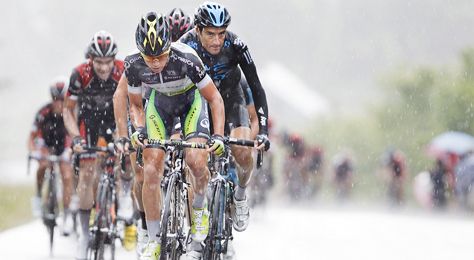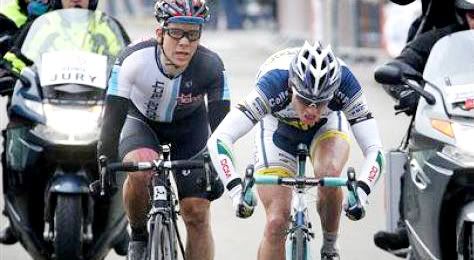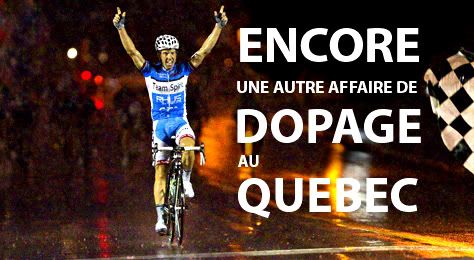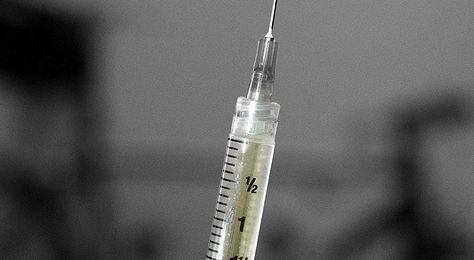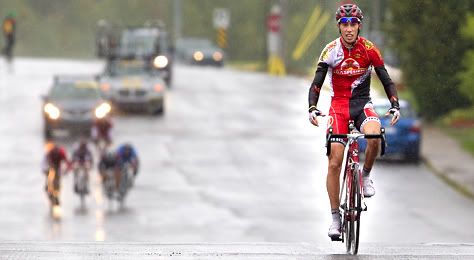In my
last article I alluded to the fact that EPO was arguably the most dangerous drug in sport and due to the contradictory feedback defending its safety, I have decided to explain further.
Erythropoietin increases hematocrit levels (volume percentage of blood made up of red blood cells) thus increasing the amount of oxygen available to working muscles which is vital to endurance athletes. In doing so, the blood becomes very thick and with inevitable dehydration suffered during events, hematocrit levels can rise dangerously high, rendering blood as thick as syrup and prompting cardiovascular damage or heart attacks.
As explaining in my
original article, EPO can make the blood so thick that during sleep when the heart is pumping its slowest, the blood cannot pump through the arteries prompting a massive heart attack.
The only reason why there is so little proof of EPO fatalities is because erythropoietin is not detectable through regular blood tests and also because it disappears from the body within 48 hours.
Since the advent of EPO on the European market in 1986, cyclists were among the first known athletes to experiment with this wonder drug and many suffered the consequences of this experimentation and over the last 25 years, many more have followed.
In 1987, five Dutch cyclists died mysteriously in their sleep from heart attacks with no known cause. In 1988, two more Dutch and one Belgian cyclist died. In 1989, five more Dutch cyclists died. In 1990, two Dutch and three Belgian cyclist died. In one highly publicised case, Dutch cyclist Johannes Draaijer, age 27, was known to be using EPO prior to dying of a massive heart attack.
If you think that EPO use has become safer since its early induction; think again. Unless you have a team of doctors by your side monitoring your every move, this drug can prove to be your worst nightmare.
Caffeine
 |
| Photo © Pasquale Stalteri Photography / Miroir du Cyclisme |
The word "coffee" originates from ancient Arabic (gahweh) meaning "gives strength". So the effects of caffeine, the main stimulant in coffee, have been known for thousands of years.
Research studies on the use of caffeine in sports often show contradicting results due to some obvious flaws. Some studies have used sedentary people as test subjects while others have not taken their subject's previous use or non use of caffeine into account prior to testing.
So let me set the record straight as far as how to optimize this performance booster and then you be the judge. If the novelty of the word "caffeine" has worn off and doesn't impress you, then you may be pleasantly surprised.
Important notes:
- Caffeine stimulates the central nervous system, increases the release of adrenalin, increases the use of bodyfat as a fuel and spares glycogen when glycogen levels are low.
- Dehydration and increased body temperature are directly dependent on a subject's fitness level and studies using trained athletes showed very little increase of either.
- Studies show that some component(s) in coffee interferes with the normal ergogenic response of caffeine. Therefore use standardized caffeine supplements or in my opinion, better quality, freshly ground coffee although the exact mg amount may vary significantly from various roasts.
- Studies involving cyclists showed an 18% increase in time to exhaustion and an increase in exercise intensity of up to 24% while reducing lactic acid build-up.
How to use caffeine to boost performance:
- Ingest less than 25mg/day for a 2-4 week period prior to attempting to boost performance.
- Ingest less than 10mg/day if boosting performance on a weekly basis.
- Ingest 2-5mg/Kg of lean body weight 2 - 4 hours prior to event.
- Adjust timing and dosages accordingly.
Although products containing caffeine can be readily found in every household, caffeine is still a drug and should be used cautiously and with moderation. Furthermore, to get the desired training effects while using caffeine, daily consumption of coffee or other caffeine based products should be kept to a bare minimum.
When taken within legal limits, the proper use of caffeine may significantly improve both training and race performances without sacrificing your health or creating a scandal.
Pasquale Stalteri
Related Links:
Disclaimer and Copyrights:
All Rights Are Reserved Without Prejudice.
Anything contained within this document is the property of Pasquale Stalteri and may not be further copied, photographed, reproduced, translated, transformed or transmitted, in whole or in part, without prior express written consent from Pasquale Stalteri.
The contents of this document may not be sold or used for personal gain without the prior express written consent of Pasquale Stalteri.
The following information is intended for educational purposes only and Pasquale Stalteri does not assume any responsibility for any injuries or health issues which may arise from the applied use of this information.
Pasqiuale Stalteri strongly advises that you consult with a doctor or health care professional prior to embarking upon any exercise or diet regimen.
Pasquale Stalteri does not guarantee accuracy, completeness and or topicality of the information presented within this document.






